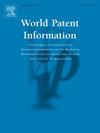用生成式人工智能推进专利法:人工智能辅助起草、现有技术搜索和多模式知识产权保护的人在环系统
IF 2.2
Q2 INFORMATION SCIENCE & LIBRARY SCIENCE
引用次数: 0
摘要
生成式人工智能和大型语言模型(llm)正在通过自动化传统上需要大量法律和技术专业知识的复杂任务来改变专利法。本文探讨了旨在加强专利起草、现有技术检索和多式联运知识产权(IP)保护的人工智能辅助系统。人在循环(HITL)框架在确保人工智能生成的产出保持准确、合法和合乎道德方面发挥着至关重要的作用,增强了人类的专业知识,而不是取代了它。我们评估了GPT-4、Claude和Gemini等法学硕士在专利相关任务中的适用性,突出了它们的优势和局限性。该研究还探讨了关键挑战,包括GDPR合规性、可解释性问题以及过时培训数据的影响。此外,还讨论了减轻人工智能产生的“幻觉”和优化特定专利应用的提示工程的策略。谷歌Patents、PatSnap和LexisNexis等行业领先平台的对比分析说明了人工智能工具如何被整合到专利工作流程中。本文为将人工智能纳入法律体系提供了理论见解和实践建议。通过解决人工智能产生的发明的技术和伦理影响,该研究强调了透明度、问责制和强有力的人类监督的重要性。本研究旨在指导人工智能技术与专利法的无缝整合,在日益复杂的创新环境中提高效率、准确性和合规性。本文章由计算机程序翻译,如有差异,请以英文原文为准。
Advancing patent law with generative AI: Human-in-the-loop systems for AI-assisted drafting, prior art search, and multimodal IP protection
Generative AI and Large Language Models (LLMs) are transforming patent law by automating complex tasks that traditionally demand significant legal and technical expertise. This paper examines AI-assisted systems designed to enhance patent drafting, prior art searches, and multimodal intellectual property (IP) protection. Human-in-the-Loop (HITL) frameworks play a crucial role in ensuring that AI-generated outputs remain accurate, legally compliant, and ethically sound, augmenting human expertise rather than replacing it.
We evaluate the applicability of LLMs such as GPT-4, Claude, and Gemini for patent-related tasks, highlighting their advantages and limitations. The study also explores critical challenges, including GDPR compliance, issues of interpretability, and the impact of outdated training data. Furthermore, strategies to mitigate AI-generated “hallucinations” and optimize prompt engineering for patent-specific applications are discussed. A comparative analysis of industry-leading platforms like Google Patents, PatSnap, and LexisNexis illustrates how AI tools are being integrated into patent workflows.
The paper provides both theoretical insights and practical recommendations for integrating AI into legal systems. By addressing the technical and ethical implications of AI-generated inventions, the study underscores the importance of transparency, accountability, and robust human oversight. This research aims to guide the seamless integration of AI technologies into patent law, promoting efficiency, accuracy, and compliance in an increasingly complex innovation landscape.
求助全文
通过发布文献求助,成功后即可免费获取论文全文。
去求助
来源期刊

World Patent Information
INFORMATION SCIENCE & LIBRARY SCIENCE-
CiteScore
3.50
自引率
18.50%
发文量
40
期刊介绍:
The aim of World Patent Information is to provide a worldwide forum for the exchange of information between people working professionally in the field of Industrial Property information and documentation and to promote the widest possible use of the associated literature. Regular features include: papers concerned with all aspects of Industrial Property information and documentation; new regulations pertinent to Industrial Property information and documentation; short reports on relevant meetings and conferences; bibliographies, together with book and literature reviews.
 求助内容:
求助内容: 应助结果提醒方式:
应助结果提醒方式:


